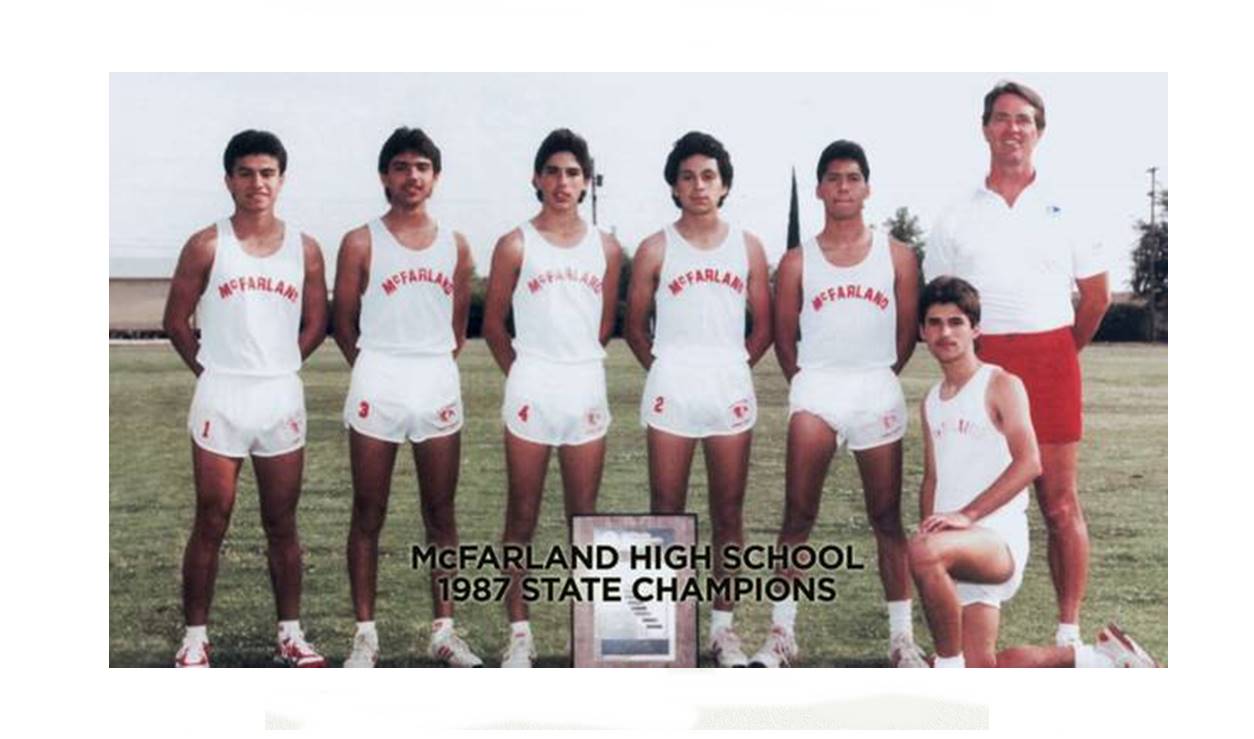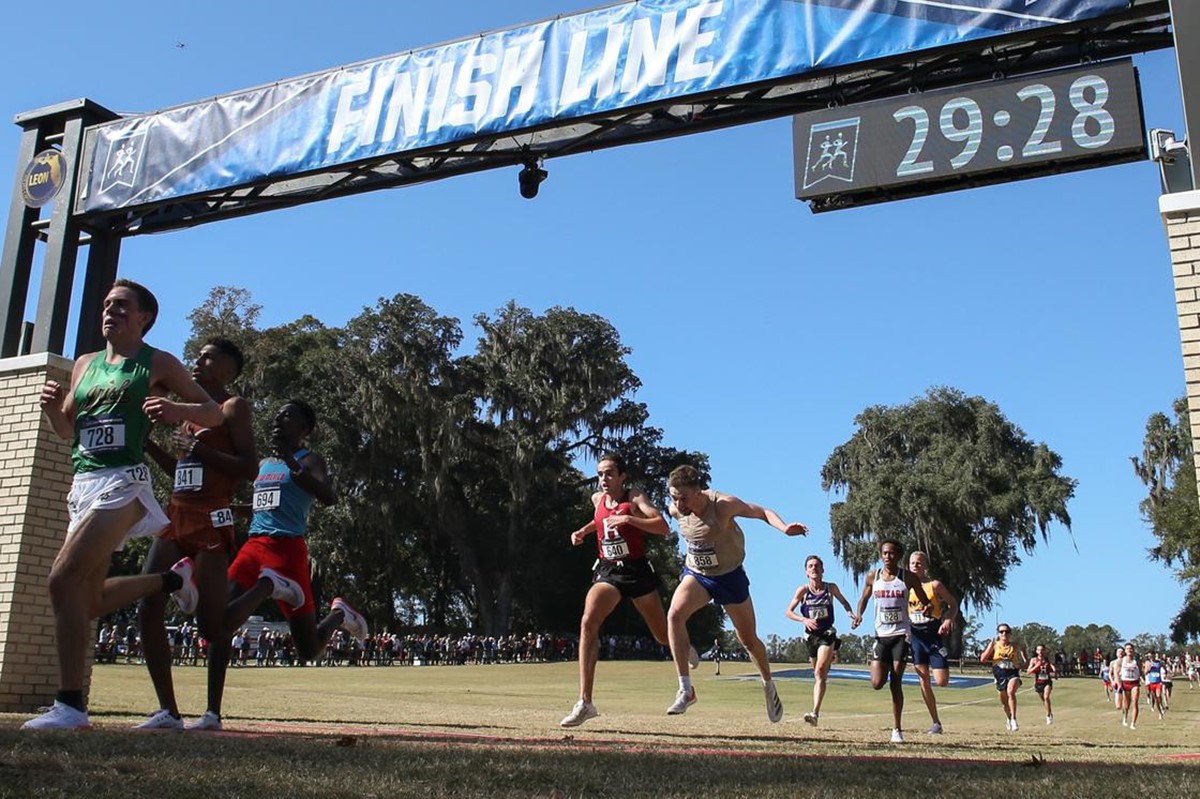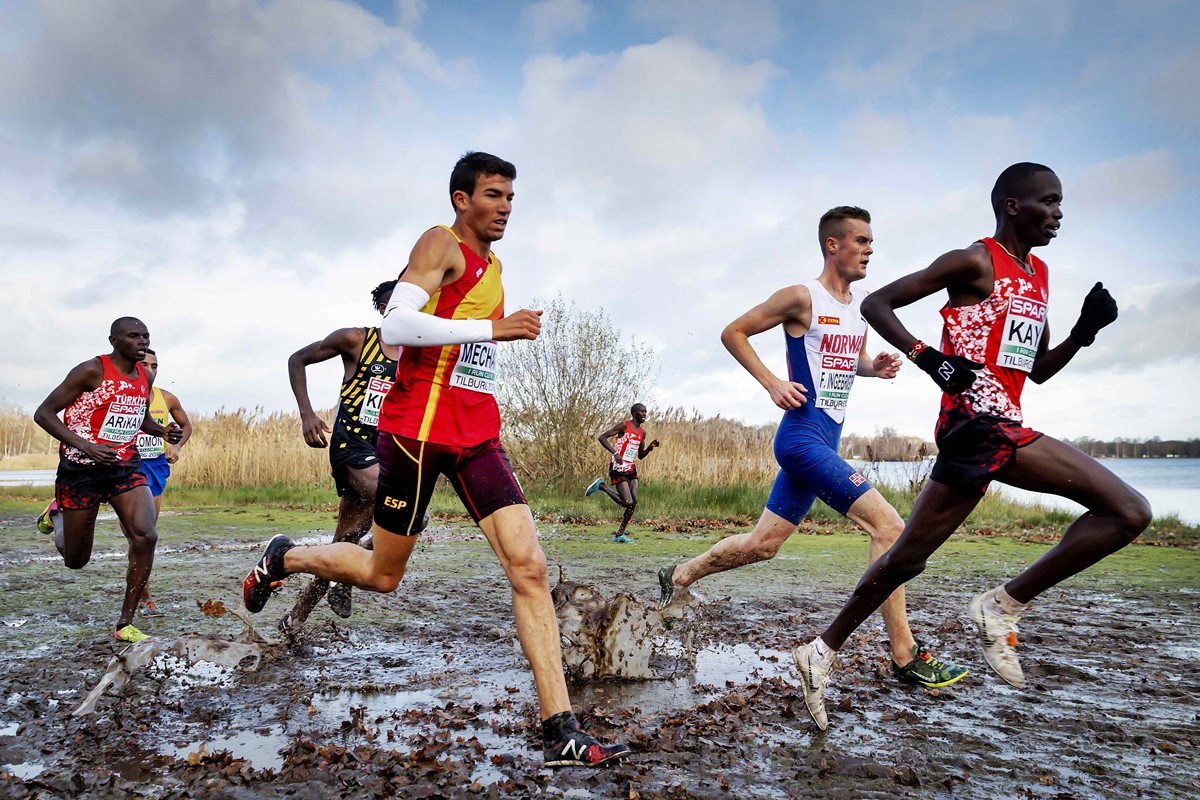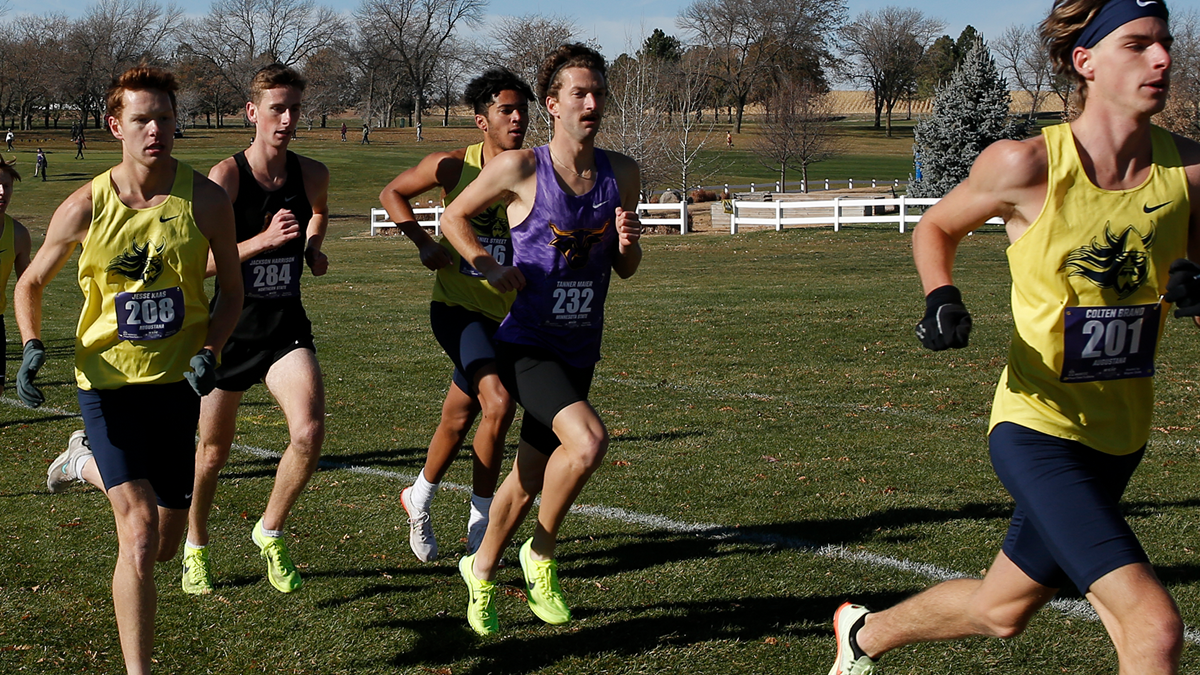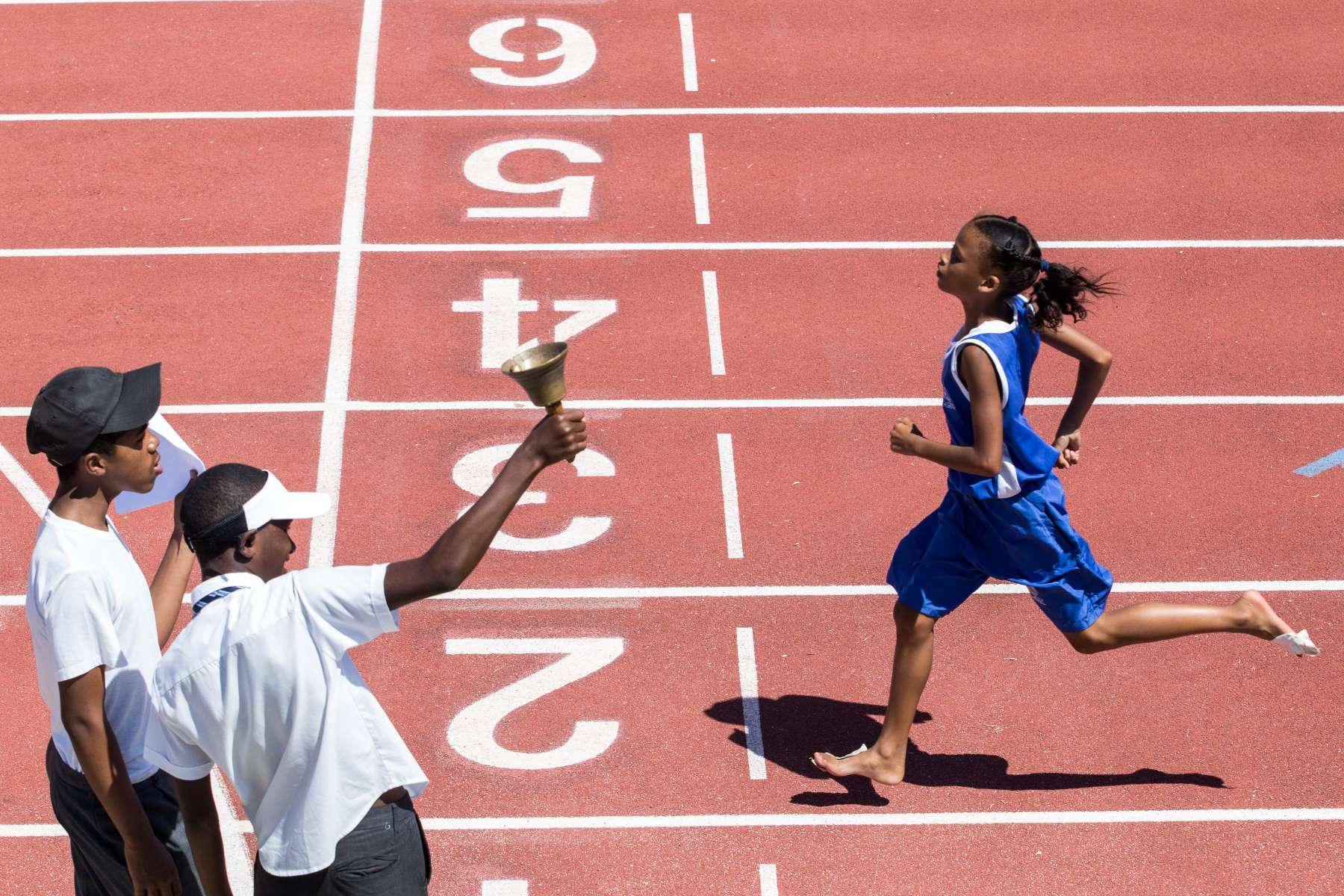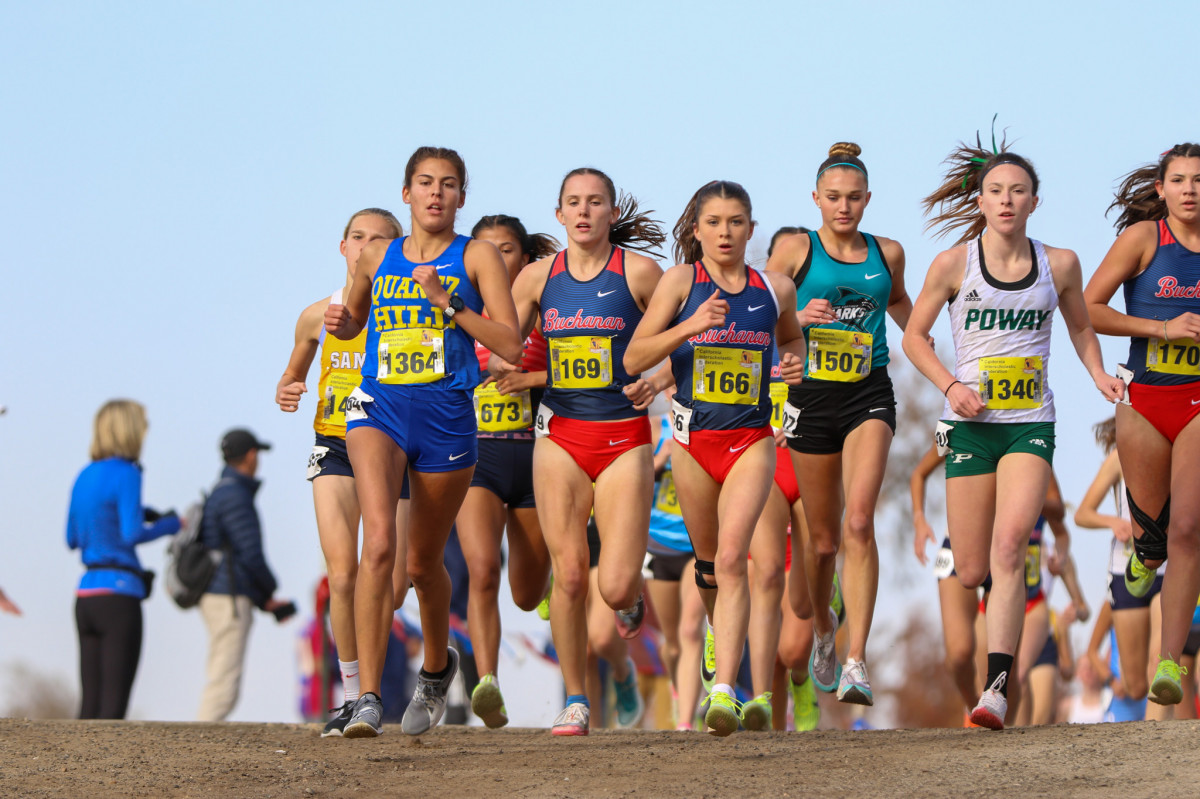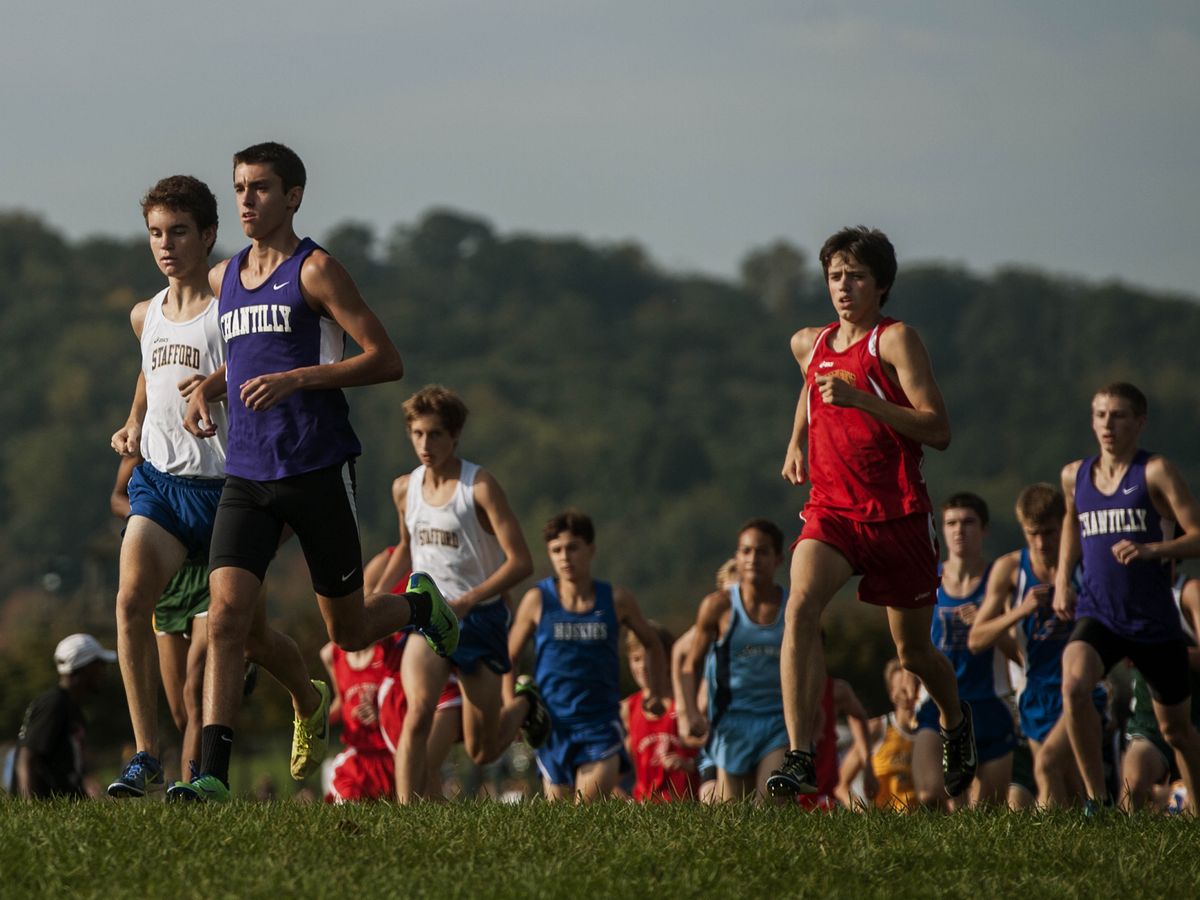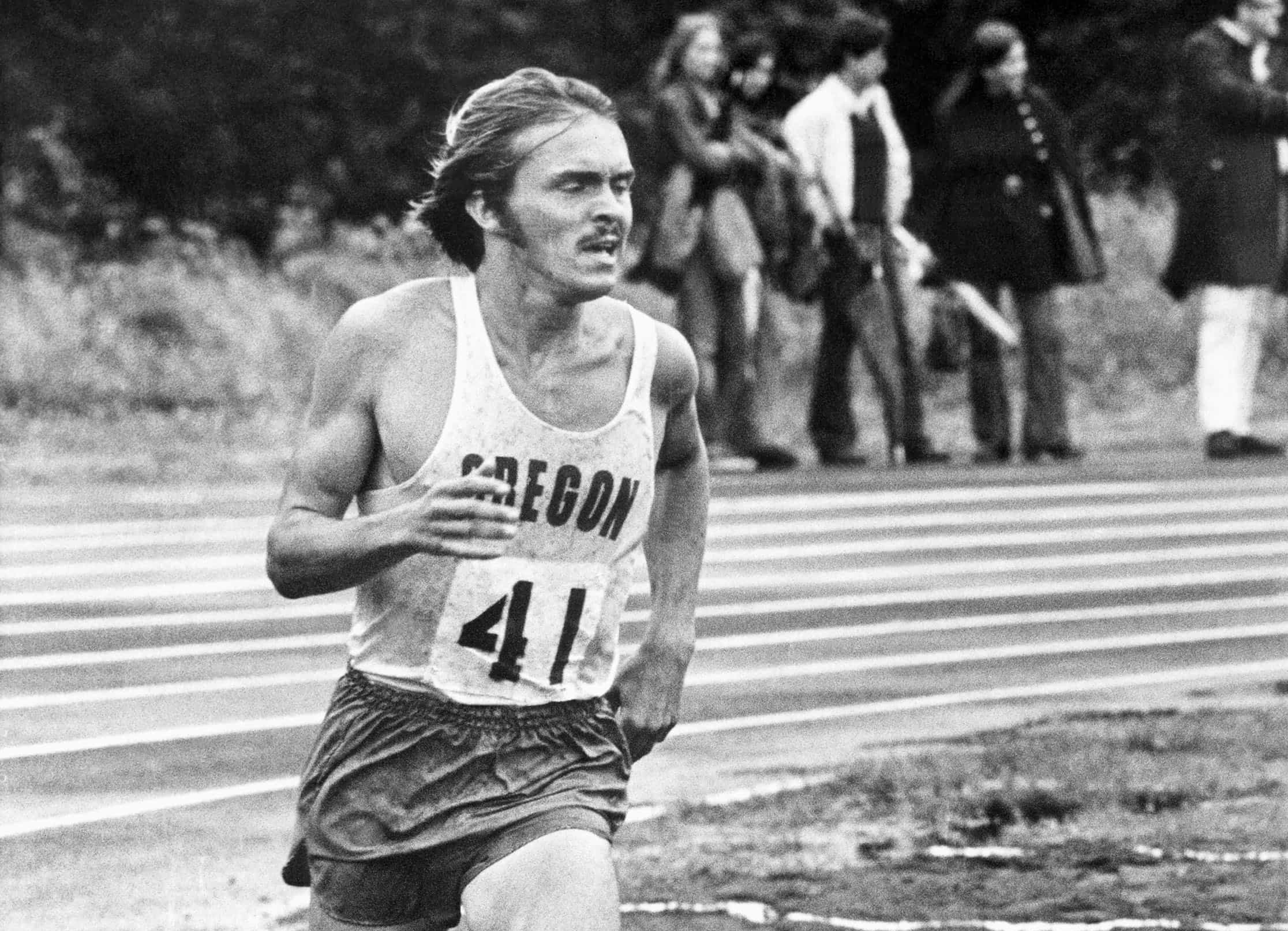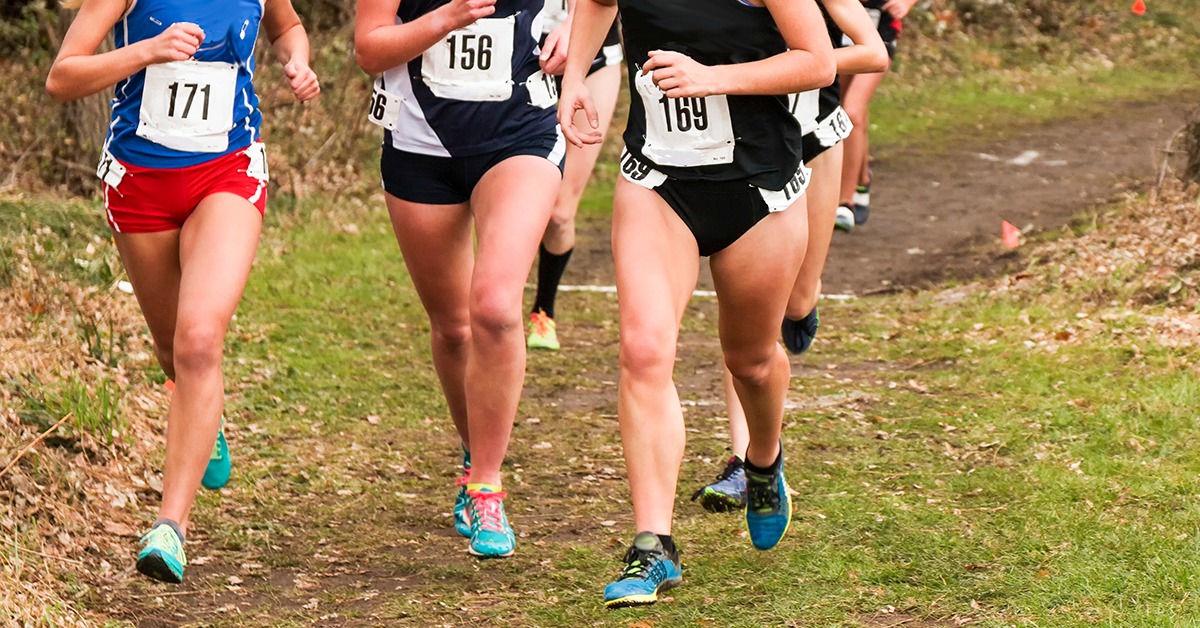Home>Misc>Featured>How Far Do Middle School Cross Country Run
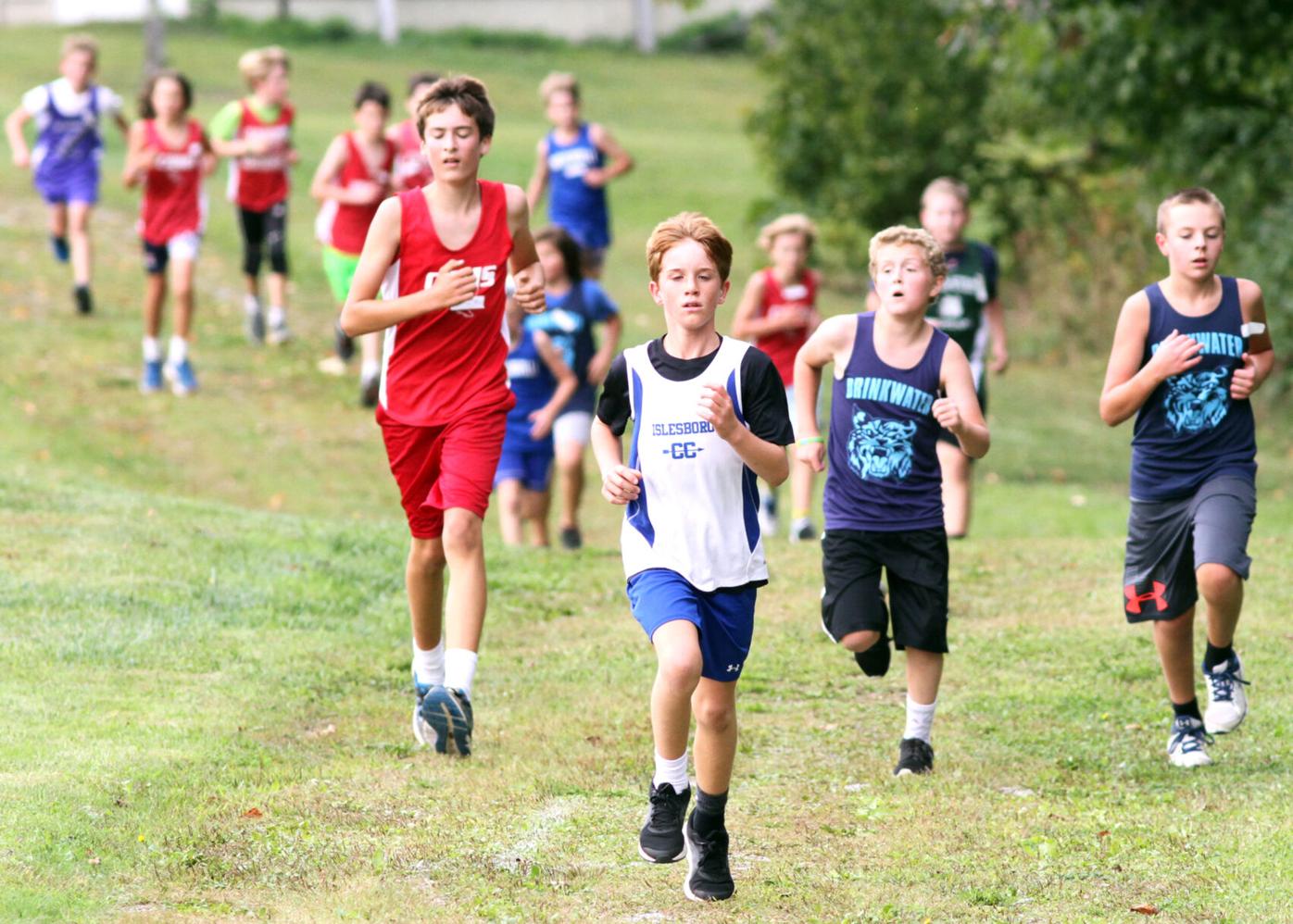

Featured
How Far Do Middle School Cross Country Run
Modified: August 21, 2023
Discover how far middle school cross country runners typically go in a race and get insights from featured athletes and coaches. Join the running community and explore this thrilling sport!
Introduction
Welcome to the exciting world of middle school cross country! If you’re new to this sport or just curious about the distances involved, you’ve come to the right place. Middle school cross country is a fantastic opportunity for young athletes to develop their endurance, strength, and mental fortitude while enjoying the camaraderie of a team sport.
Whether you’re a student thinking of joining the cross country team or a parent wanting to support your child’s athletic journey, understanding the distances in middle school cross country is crucial. Knowing what to expect can help you prepare mentally and physically, set realistic goals, and better appreciate the challenges and accomplishments.
In this article, we’ll delve into the details of middle school cross country distances, exploring the factors that influence them, common race lengths, and essential training tips for young athletes.
Before we dive into the specifics, it’s essential to understand what middle school cross country is. Cross country is a sport where athletes compete on outdoor courses that typically span a variety of terrains, including grass, trails, and sometimes even pavement. Unlike track and field events that occur on a flat, marked track, cross country races take place in natural environments, adding an element of unpredictability and adventure to the sport.
Middle school cross country teams consist of both boys and girls, usually ages 11 to 14. These athletes compete against other schools in their district or region, with the opportunity to advance to higher levels of competition such as state championships.
What is Middle School Cross Country?
Middle school cross country is a sport that combines endurance running with team camaraderie. It involves athletes, typically between the ages of 11 and 14, running on outdoor courses of varying distances. The sport emphasizes physical fitness, mental resilience, and strategic race tactics.
Unlike other sports that focus on individual performance or team-based competitions, middle school cross country strikes a unique balance. While each runner’s individual performance is essential, the team’s overall score is determined by the combined finishing positions of its top runners. This aspect fosters a strong sense of teamwork and encourages athletes to support and push each other to achieve their best results.
Middle school cross country is not just about running fast; it’s about embracing the challenge of running across various terrains and elevations. Athletes must adapt to different surfaces like grass, trails, and sometimes even pavement. This dynamic environment adds excitement and unpredictability to the sport, making every race an adventure.
One of the distinctive aspects of middle school cross country is the emphasis on distance running. Unlike track events that have fixed distances, cross country courses can vary in length, depending on the age group and the specific meet. The distances raced in middle school typically range from 1.5 to 3 miles.
Participating in middle school cross country offers numerous benefits beyond physical fitness. It helps young athletes develop discipline, perseverance, and mental resilience. The sport also promotes a healthy lifestyle and establishes a foundation for future athletic endeavors.
Furthermore, middle school cross country provides an opportunity for students to build friendships, develop teamwork skills, and enhance their self-confidence. The supportive and inclusive nature of the sport fosters a sense of belonging and camaraderie among team members.
Whether an athlete becomes a lifelong enthusiast of distance running or simply enjoys the experience of being part of a team, middle school cross country lays the groundwork for a lifelong appreciation of fitness and healthy competition.
The Importance of Distance in Cross Country
The distance covered in a cross country race is a crucial element of the sport. It not only tests an athlete’s physical endurance but also plays a significant role in race strategy and overall performance. Understanding the importance of distance in cross country can help athletes and coaches develop effective training plans and race strategies.
One of the primary reasons why distance is essential in cross country is that it challenges an athlete’s aerobic capacity and stamina. Running longer distances requires the body to utilize oxygen efficiently, build endurance, and sustain a consistent pace throughout the race. By training for and competing in races of varying lengths, middle school cross country runners develop their cardiovascular fitness and learn to push through physical and mental barriers.
Distance also affects race strategy. Different distances require different approaches and pacing techniques. For shorter races, like 1.5 or 2 miles, athletes may opt for a more aggressive start and aim to maintain a fast pace throughout the race. On the other hand, longer races, such as 3 miles, may call for a more conservative start, strategic pacing, and a well-timed surge toward the finish line. Understanding the optimal strategies for different distances allows athletes to plan their races accordingly and maximize their performance.
The distance in cross country also influences the type of training that athletes should focus on. Training for longer distances involves building a solid base of endurance through consistent mileage and long runs. This helps develop muscular and cardiovascular strength, allowing athletes to maintain a steady pace over an extended period. Training for shorter distances, on the other hand, may involve more speed work, interval training, and anaerobic exercises to improve overall speed and explosive power.
Moreover, the distance in cross country races creates an opportunity for athletes to challenge themselves mentally and achieve personal growth. Running longer distances requires mental fortitude, determination, and the ability to push through physical discomfort. Enduring the challenges of a race and crossing the finish line after covering a significant distance can instill a sense of accomplishment, confidence, and resilience in young athletes.
Overall, distance plays a crucial role in cross country, influencing the physical, strategic, and mental aspects of the sport. It provides athletes with the opportunity to push their limits, develop endurance, and embrace the journey of constant improvement. Understanding the importance of distance in cross country allows athletes to tailor their training, refine their race strategies, and ultimately achieve their goals on the course.
Understanding Middle School Cross Country Distances
When it comes to middle school cross country, understanding the distances involved is essential for both athletes and their supporters. The distances covered in middle school races can vary depending on factors such as age group, meet regulations, and course availability. Let’s take a closer look at the typical distances run in middle school cross country.
In general, middle school cross country distances range from 1.5 to 3 miles, with most races falling within this range. The specific distance for a particular race is typically determined by the governing body or organization overseeing the event. It’s important to note that these distances are shorter than those run at the high school or collegiate level, allowing young athletes to develop their running abilities gradually.
For the younger age groups, often consisting of 6th graders, the distances may be on the shorter end, around 1.5 to 2 miles. This allows these athletes to build a foundation in cross country without overwhelming them with longer distances too soon. As they progress to higher grades, the distances gradually increase, providing them with new challenges and opportunities for growth.
The distances in middle school cross country are designed to strike a balance between providing a test of endurance and ensuring the athletes’ safety. It’s crucial for event organizers to consider the age and fitness levels of the participants when determining the appropriate distances. This helps prevent injury and burnout while still challenging the young athletes to push their limits.
Understanding the distances in middle school cross country can give athletes a sense of what to expect in their races and how to plan their training accordingly. By knowing the approximate distance of their upcoming race, athletes can adjust their mileage, pace, and stamina-building workouts to prepare themselves effectively.
It’s worth noting that the distances in middle school cross country may vary slightly from region to region or even from one meet to another. Factors such as course availability and the hosting organization’s preferences can impact the exact distance of a race. However, staying informed about the approximate distances in the middle school cross country community can help athletes and coaches prepare adequately and set realistic goals for their performances.
Understanding the distances in middle school cross country not only assists athletes in their training and preparation but also allows parents, supporters, and spectators to follow and appreciate the progress and achievements of the young runners. It provides a common language among the cross country community and fosters a deeper understanding and appreciation of the sport.
Factors Affecting Middle School Cross Country Distances
Several factors influence the distances in middle school cross country races. These factors can vary from one event to another or even within different regions. It’s important to understand these factors to appreciate the reasons behind the variations in race distances. Let’s explore the key factors that can affect middle school cross country distances.
Age and Grade Level: As athletes progress through middle school, their age and grade level play a role in determining the appropriate race distances. Younger athletes, such as 6th graders, may be assigned shorter distances to gradually introduce them to the sport and ensure they have a positive and safe experience. Older athletes, such as 8th graders, are typically capable of running longer distances and may face more challenging race courses.
Course Availability: The availability and suitability of cross country courses can impact the distances chosen for middle school races. Organizers may need to work with the available terrain and facilities, adapting the course to fit within the given space. This can result in varying distances from one meet to another, even within the same region.
Governing Body Regulations: Certain governing bodies or organizations that oversee middle school cross country may set specific guidelines or rules regarding race distances. These regulations often aim to ensure fair competition and the safety of the athletes. Organizers must adhere to these guidelines, which can influence the distances chosen for races.
Time Constraints: The time available for holding a cross country meet can also impact the distances run. Organizers must consider factors such as daylight hours, scheduling constraints, and the number of races or teams participating. Adjustments in race distances may be made to accommodate the logistics of the event.
Course Difficulty: The terrain and difficulty level of a cross country course can also affect the chosen distances for middle school races. Courses with challenging terrain, such as hills or uneven surfaces, may require athletes to exert more effort and stamina. In such cases, race distances can be adjusted to ensure a fair and manageable competition for the young athletes.
Regional Norms: Middle school cross country distances can also be influenced by regional norms and traditions. Certain regions or districts may have established standards for race distances based on their historical practices or preferences. These norms are often determined by the collective experience and expectations of the cross country community in that specific area.
It’s important to remember that while these factors can influence middle school cross country distances, they are ultimately determined by event organizers and governing bodies. Their aim is to provide young athletes with appropriate challenges, promote fair competition, and prioritize the safety and enjoyment of the participants.
Understanding the factors influencing middle school cross country distances helps athletes, coaches, and supporters appreciate the thought and consideration that goes into organizing these races. It also allows athletes to adapt their training and strategies accordingly, ensuring they are well-prepared for the specific distances they will encounter in their competitions.
Common Distances for Middle School Cross Country Races
While there can be variations in race distances from one meet to another, there are some common distances that are typically run in middle school cross country races. These distances are designed to challenge young athletes while taking into account their age, fitness level, and skill development. Let’s explore some of the most common distances for middle school cross country races.
1.5 Miles: Many middle school cross country races feature a distance of approximately 1.5 miles. This distance is often suitable for younger athletes or those new to the sport. It allows them to gradually build their endurance and familiarity with racing, preparing them for longer distances as they progress through middle school.
2 Miles: Another common distance for middle school cross country races is around 2 miles. This distance provides a bit more challenge and is often assigned to older or more experienced athletes. Running 2 miles allows athletes to push their limits and develop their stamina and race strategies.
2.5 Miles: Some middle school cross country races may feature a distance of approximately 2.5 miles. This distance provides an additional challenge for athletes who are ready to tackle longer distances. It requires a higher level of endurance and mental fortitude, further developing the young runners’ abilities.
3 Miles: In some cases, middle school cross country races may include a distance of approximately 3 miles. This distance is often assigned to older or more advanced athletes who are closer to high school levels. Running 3 miles allows these athletes to test their endurance and prepares them for the longer distances they may encounter in high school cross country.
It’s important to note that these common distances are not set in stone and can vary based on the organizing body, meet regulations, and regional norms. Athletes and coaches should be prepared for potential variations in race distances when competing in different events or against different schools.
Furthermore, as athletes progress through the middle school years, it’s common for them to face increasing distances as they gain more experience and develop their fitness. This gradual progression helps athletes build a strong foundation in distance running and prepares them for the demands of higher-level competition in high school and beyond.
Understanding the common distances for middle school cross country races allows athletes to set appropriate goals, tailor their training, and mentally prepare for the challenges they will face. Coaches can also use this knowledge to craft training plans that gradually build their athletes’ endurance and confidence as they tackle longer distances throughout the season.
Ultimately, regardless of the specific distances, middle school cross country races offer young athletes an opportunity to develop their running skills, build resilience, and enjoy the unique camaraderie that comes with being part of a team sport.
Preparing for Middle School Cross Country Distances
Preparing for middle school cross country distances involves a combination of physical training, mental preparation, and strategic race planning. Whether you’re a young athlete getting ready to compete or a parent supporting your child’s journey, here are some essential tips to help you prepare for the distances involved in middle school cross country.
Build Endurance Gradually: It’s important to gradually increase your mileage and endurance to prepare for the distances in middle school cross country. Start with shorter runs and gradually increase the distance over time. Add in longer runs once a week to build endurance and develop the ability to sustain a consistent pace for the duration of a race.
Include Speed Workouts: While endurance is important, incorporating speed workouts into your training is crucial for middle school cross country. Intervals, tempo runs, and fartlek training help improve your speed and ability to maintain a strong pace during races. Regular speed workouts help you become comfortable with faster speeds and teach your body to recover quicker.
Practice Race Pacing: Familiarize yourself with different race pacing strategies based on the distance you’ll be competing in. Learn to start conservatively, find a comfortable rhythm, and finish strong. Practicing race pacing during training runs will help you develop a better understanding of your capabilities and how to distribute your energy throughout the race.
Train on Varied Terrain: Middle school cross country courses can feature different terrains like grass, trails, hills, and uneven surfaces. To prepare for these varying conditions, include training runs on different terrains. This helps improve your balance, adaptability, and ability to maintain pace on different surfaces.
Stay Hydrated and Properly Fuel: Proper hydration and nutrition play a vital role in your training and race performance. Drink plenty of water throughout the day, especially before and after runs. Fuel your body with nutritious meals and snacks to provide the energy you need to sustain the distances in cross country races.
Practice Mental Focus: Long-distance running requires mental fortitude. Develop mental resilience by training your mind to stay focused and to push through discomfort or fatigue. Practice positive self-talk, visualization techniques, and develop strategies to overcome challenging moments during races.
Attend Team Practices and Workouts: Take advantage of your school’s cross country team practices and workouts. Cooperate with your teammates and learn from each other. Group training sessions provide the opportunity to simulate race scenarios, challenge each other, and foster camaraderie within the team.
Listen to Your Body: Pay attention to your body’s signals and adjust your training as needed. Rest and recovery are just as important as the actual training. Be mindful of any pain or discomfort and seek guidance from your coach or healthcare professional if needed.
Set Realistic Goals: When preparing for middle school cross country distances, set goals that are realistic and achievable. Consider your current fitness level, previous race performances, and the specific distance you’ll be racing. Incrementally improve your times and aim for personal bests, keeping in mind the gradual progression of your training and race distances.
Preparing for middle school cross country distances requires dedication, consistency, and a positive mindset. By following these tips and staying committed to your training, you’ll be well-prepared to tackle the specific distances and challenges that come with middle school cross country races.
Training Tips for Middle School Cross Country Runners
Training is a crucial component of preparing for middle school cross country. To perform at your best and handle the distances, it’s essential to follow effective training techniques. Here are some valuable training tips for middle school cross country runners:
Establish a Training Schedule: Create a structured training schedule that balances running, rest, and cross-training. Include regular running sessions, strength workouts, speed workouts, and recovery days. Consistency is key to building endurance and improving race performance.
Gradually Increase Mileage: Gradually increase your mileage each week to build your running capacity and endurance. Start with a comfortable base mileage and increase it by no more than 10% each week. This gradual progression helps prevent injuries and allows your body to adapt to the demands of long-distance running.
Incorporate Strength Training: Include strength training exercises in your training routine to build muscular strength, stability, and prevent injury. Focus on exercises like squats, lunges, planks, and core exercises that target the muscles used in running. Aim for two to three strength training sessions per week.
Utilize Interval Training: Interval training is an effective way to improve speed and increase your anaerobic capacity. Incorporate intervals into your training, alternating periods of high-intensity running with periods of recovery. For example, sprint for 200 meters, then jog or walk for 200 meters. Repeat this cycle for a set number of repetitions.
Vary Training Terrain: Train on various terrains similar to those you will encounter during races. This helps build agility, adaptability, and improves your ability to maintain pace on different surfaces. Mix up your training with grass, trails, hills, and even pavement to develop a well-rounded running ability.
Maintain Good Running Form: Pay attention to your running form and maintain proper posture, alignment, and relaxation while running. This helps optimize efficiency, conserves energy, and reduces the risk of injury. Keep your head up, shoulders relaxed, and maintain a slight forward lean from the ankles.
Stay Hydrated and Well-Nourished: Hydration and proper nutrition are essential for optimal performance. Stay hydrated throughout the day by drinking water regularly and replenish electrolytes lost through sweat. Eat a well-balanced diet rich in carbohydrates, lean proteins, and healthy fats to fuel your training and support muscle recovery.
Set Realistic Goals: Set achievable goals that align with your abilities and stage of training. Break down your goals into short-term and long-term targets. Celebrate small victories along the way and use them as motivation to keep pushing forward.
Listen to Your Body: Pay attention to your body’s signals and rest when needed. Pushing through fatigue or pain can lead to overuse injuries. If you experience persistent pain or discomfort, seek guidance from a coach or healthcare professional.
Enjoy the Journey: Remember to have fun and enjoy the process of training and racing. Cross country is not just about the end result but also about the experiences and friendships you make along the way. Embrace the challenges, celebrate the successes, and savor every moment of your middle school cross country journey.
By following these training tips, you’ll be well-prepared to handle the distances, improve your performance, and thrive in middle school cross country. Stay dedicated, consistent, and have a positive mindset as you embark on this rewarding athletic endeavor.
Advantages and Benefits of Running Longer Distances in Middle School Cross Country
Running longer distances in middle school cross country provides numerous advantages and benefits for young athletes. While it may be challenging, it offers significant opportunities for growth and development. Let’s explore some of the advantages and benefits of running longer distances in middle school cross country.
Improved Endurance: Running longer distances helps build endurance by challenging the cardiovascular system and improving the body’s ability to efficiently use oxygen. As athletes gradually increase their mileage and cover more significant distances, their bodies adapt and become better equipped to sustain a consistent pace over an extended period of time.
Mental Toughness: Running longer distances in cross country develops mental toughness and resilience. It pushes athletes to confront physical discomfort and mental barriers, teaching them how to overcome challenges and persevere. This mental strength cultivated through long-distance running can extend to other areas of life, helping young athletes develop a resilient mindset that can benefit them in various aspects of their lives.
Strategic Race Planning: Longer distances in middle school cross country require athletes to develop strategic race planning skills. As they run longer distances, athletes learn to pace themselves, manage energy levels, and make tactical decisions throughout the race. This enables them to better understand their capabilities, set achievable goals, and maximize their performance on race day.
Physical Fitness: Running longer distances in cross country improves overall physical fitness. It engages various muscle groups, promotes cardiovascular health, and helps maintain a healthy weight. By covering more significant distances, young athletes develop strength, speed, and endurance, which can positively impact their overall fitness level and overall well-being.
Character Development: Long-distance running in middle school cross country fosters character development. It teaches discipline, perseverance, and the value of hard work. Young athletes learn about commitment, goal-setting, and the satisfaction that comes from achieving personal milestones. These character-building experiences lay the foundation for success both on and off the race course.
Team Spirit and Camaraderie: Running longer distances in cross country strengthens the sense of team spirit and camaraderie among athletes. Enduring the challenges of longer distances together creates a bond among teammates as they support and push each other to achieve their best. The shared experiences and triumphs build lasting friendships and create a supportive and inclusive team environment.
Preparation for Higher Levels: Running longer distances in middle school prepares athletes for future endeavors in high school and beyond. It provides a foundation for continued growth in distance running and ensures a smoother transition to longer races as athletes progress. The experience gained from running longer distances in middle school cross country allows athletes to be better equipped to handle the demands of competitive running in higher levels of competition.
Overall Well-being: Running longer distances in cross country promotes overall well-being. It releases endorphins, reduces stress, and improves mental clarity. Engaging in regular physical activity through long-distance running contributes to better physical and mental health, enhancing quality of life and building a lifelong enthusiasm for fitness.
Running longer distances in middle school cross country provides a multitude of advantages and benefits. It not only enhances physical fitness but also builds mental resilience, fosters teamwork and camaraderie, and prepares young athletes for future challenges. Embracing longer distances in cross country can lead to personal growth, lifelong friendships, and a lifelong love for running.
Conclusion
Middle school cross country is a challenging and rewarding sport that introduces young athletes to the world of distance running. Understanding the distances involved and the factors that affect them is crucial for athletes, coaches, and supporters. Middle school cross country races typically cover distances ranging from 1.5 to 3 miles, allowing athletes to progressively build their endurance and develop their racing abilities.
Running longer distances in middle school cross country offers a multitude of advantages and benefits. It improves endurance, develops mental toughness, and teaches strategic race planning. Athletes gain physical fitness, develop character traits such as discipline and perseverance, and experience the camaraderie of being part of a team. Running longer distances also serves as preparation for higher levels of competition and promotes overall well-being.
To prepare for middle school cross country distances, athletes should establish a training schedule, gradually increase mileage, incorporate strength training, and practice race pacing. It’s important to listen to their bodies, stay hydrated, and set realistic goals. By following these training tips, athletes will be well-prepared to handle the challenges that come with running longer distances in cross country races.
Middle school cross country is not just about the distances; it’s about the journey, the personal growth, and the friendships formed along the way. It’s a sport that builds resilience, instills discipline, and fosters a lifelong love for running. Whether you’re a young athlete lacing up your shoes or a parent cheering from the sidelines, middle school cross country provides an opportunity to embrace the challenges, celebrate the achievements, and create lasting memories.
So lace up your running shoes, take on the distances, and embrace the adventure of middle school cross country. The experiences, lessons, and benefits gained from running longer distances will extend far beyond the race course and shape young athletes into well-rounded individuals, both on and off the track.

